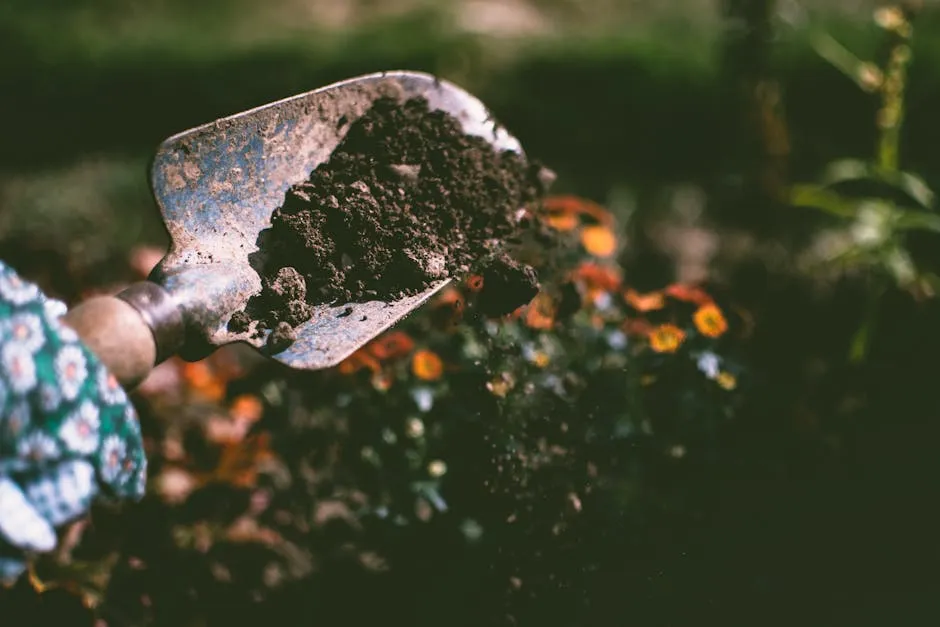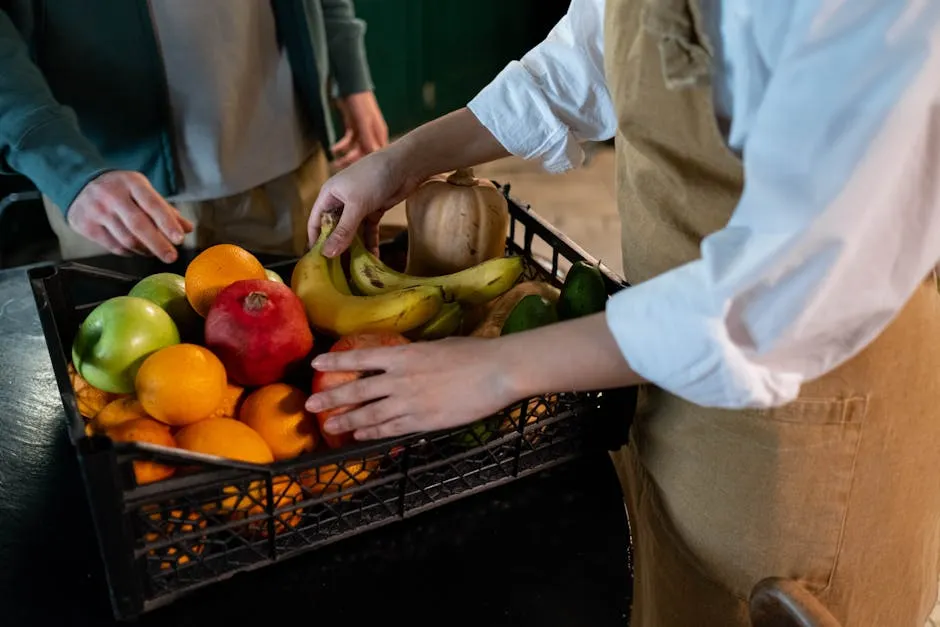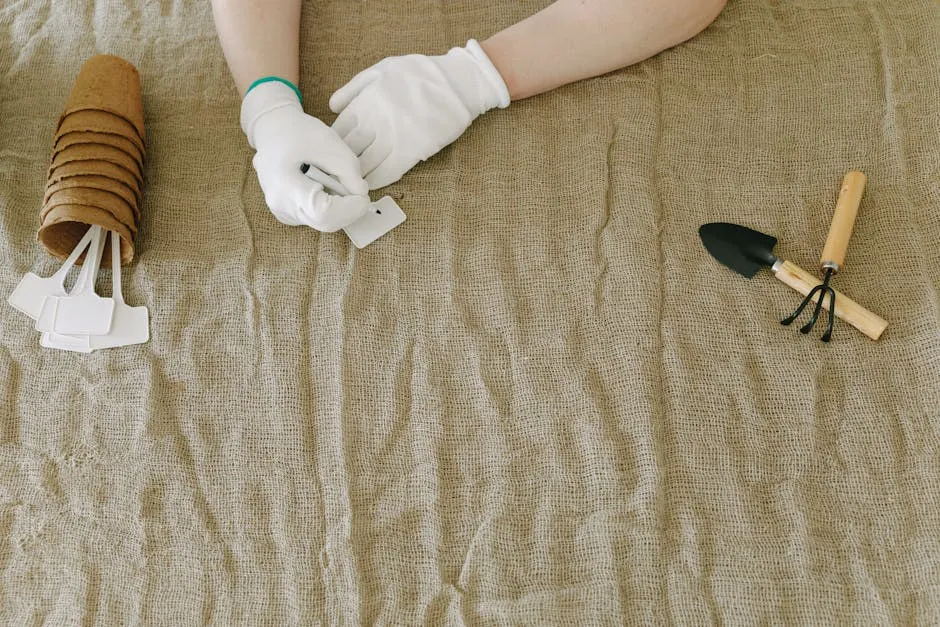

Good Garden Scion Wood for Sale: The Ultimate Guide to Grafting Success
Introduction
In gardening, scion wood is the unsung hero of fruit tree propagation. Imagine growing your own apple tree, bearing delicious, crisp fruits like those from your favorite orchard. Sounds cool, right? Well, that’s the magic of grafting! This technique allows you to combine the best traits of two different plants into one.
Grafting is a straightforward way to get more fruit varieties without the long wait of growing from seed. You take a scion—a young shoot or twig from a desired variety—and attach it to a compatible rootstock. This process creates a new tree that shares the characteristics of the scion, such as fruit flavor, size, and hardiness.
So, where can you find good garden scion wood for sale? Today, we’re diving into the wonderful world of scion wood, exploring where to find the best varieties and how to make the most of them in your gardening adventures. Whether you’re a seasoned pro or just starting out, this guide will equip you with all the knowledge you need to bring your garden dreams to life.
First, let’s understand what makes scion wood special. It’s not just about picking a twig; it’s about selecting the right one. Factors like age, health, and genetics play a huge role in determining the success of your graft. Quality scion wood can mean the difference between a bountiful harvest and a sad, leafless stick in your garden.
Once you’ve got your hands on some quality scion wood, the fun really begins! We’ll discuss various grafting techniques, share tips to ensure a fruitful outcome, and provide storage guidelines to maintain the viability of your precious scions.
Ready to dig in? Let’s explore the ins and outs of good garden scion wood for sale, ensuring your next gardening adventure is as fruitful as it is enjoyable!

And to get your hands dirty, you’ll need the right tools! A reliable Grafting Knife is essential for making clean cuts, ensuring your grafting process is smooth and effective. Plus, nothing says “I’m serious about gardening” like a shiny new knife!
Summary of Key Points
- Understanding Scion Wood: What is scion wood and its role in grafting? Explanation of the scion and rootstock relationship.
- Choosing Quality Scion Wood: Factors to consider when selecting scion wood, such as age, health, and genetics.
- Where to Buy: Overview of the best places to find good garden scion wood for sale, including online nurseries, local garden centers, and scion exchanges.
- Types of Scion Wood: Detailed descriptions of popular apple and other fruit scion varieties available for purchase.
- Grafting Techniques: Basic techniques and tips for successful grafting to ensure a fruitful outcome.
- Storage and Handling: Guidelines for proper storage and handling of scion wood to maintain its viability.
- Frequently Asked Questions: Address common queries about scion wood, grafting, and related topics.
With this knowledge, you’re now ready to embark on your grafting journey! Let’s move into the specifics of what scion wood is and how to select the best options for your garden.
Types of Scion Wood
Popular Varieties
When it comes to scion wood, some fruits always steal the show. Think apples, pears, and cherries—they’re the rockstars of the garden world! Each type has unique traits that make them irresistible to gardeners.
Apple Scion Wood is where the party starts. This variety is the most popular choice for grafting. Why? Apples offer a multitude of flavors, textures, and uses. From tart to sweet, there’s an apple for everyone.
Among the superstar apple varieties, you’ll find Honeycrisp and Empire.
Honeycrisp apples are often hailed as the crème de la crème of crispiness. They boast a delightful balance of sweetness and acidity. This variety is a favorite for fresh eating, and it’s no wonder—biting into one is like munching on a juicy piece of heaven!
Empire apples, on the other hand, are the unsung heroes of the apple world. They combine the best of McIntosh and Red Delicious, delivering a perfect blend of sweetness and tartness. Whether you’re baking a pie or snacking on one, Empire apples deliver big flavor with every bite.
Now, let’s not forget about pear scion wood. Pears, with their succulent, juicy flesh, are a close second in popularity. Varieties like Bartlett and Bosc are favorites among gardeners. Bartlett pears are known for their buttery texture, while Bosc pears offer a delightful crunch.
And then we have cherry scion wood. Cherries are perfect for those with a sweet tooth. Varieties like Bing and Rainier dominate the cherry scene. Bing cherries are sweet and dark, while Rainier cherries are light, sweet, and a bit tangy. Both are fantastic for desserts, preserves, or just snacking straight from the tree!
So, whether you’re leaning towards apples, pears, or cherries, there’s a scion wood variety for every palate and preference. Choosing the right scion wood sets the stage for a fruitful garden, ensuring your gardening efforts yield a delicious harvest!

Choosing Quality Scion Wood
Factors to Consider
Selecting quality scion wood is crucial for successful grafting. Several factors play a role in ensuring you pick the best material.
First up, consider the age and health of the scion wood. Younger wood is typically preferred. It’s more likely to root successfully. Look for scions that are firm, with vibrant buds. Avoid those that appear shriveled or have signs of disease. Healthy scion wood leads to thriving trees.
Next, think about the genetic traits you’re after. Different varieties offer unique characteristics, such as flavor, hardiness, and yield. For example, if you want disease-resistant trees, seek out scion wood from varieties known for their resilience.
Lastly, always source your scion wood from reputable nurseries. Quality matters! Nurseries like Maple Grove and Roots to Fruits are well-regarded. They provide detailed information on the varieties they sell, allowing you to make informed decisions.
To help you along the way, a good Gardening Book: “The Backyard Homestead” can provide you with essential tips and tricks to help you choose the best scion wood and optimize your grafting process. You’ll be a pro in no time!
By paying attention to these factors, you can ensure your grafting endeavors are a resounding success. Happy grafting!
Where to Buy Good Garden Scion Wood
Online Nurseries
Finding good garden scion wood for sale is easier than ever, thanks to the internet! Several online nurseries specialize in high-quality scion wood, making it a breeze to find what you need.
Roots to Fruits Nursery is a fantastic option. They offer a wide selection of apple scion wood, including popular varieties like Honeycrisp and Empire. Their scion wood is harvested at the right time to ensure freshness and viability. Plus, they provide detailed descriptions of each variety, which is helpful for making informed choices.
Another great choice is Maple Grove Nursery. Known for their excellent fruiting varieties, they also offer scion wood alongside rootstock. This makes it easy to get everything you need in one place. Their scion wood is carefully collected and stored, ensuring it arrives in perfect condition.
Fruitwood Nursery is another reliable source. They provide an extensive variety of scion wood, including both common and rare fruit types. Their user-friendly website allows you to filter by type, making your shopping experience smooth and enjoyable.
Don’t forget to check out Ding Dong’s Garden. They offer seasonal sales and a variety of fruit tree scions at great prices. Their stock may vary, but you might just find a gem!
In conclusion, whether you choose Roots to Fruits, Maple Grove, Fruitwood, or Ding Dong’s Garden, these online nurseries can help you kickstart your grafting journey with quality scion wood. Happy shopping, and may your garden flourish!

Local Garden Centers
When you’re on the hunt for scion wood, local garden centers deserve a spotlight. Why? Freshness is king! Buying locally means you’re getting scion wood that’s just been harvested. No one likes sad, wilted twigs, right?
Plus, local garden centers often have knowledgeable staff. They can offer expert advice, guiding you toward the best scion wood for your climate and preferences. Imagine strolling through the aisles, chatting with a fellow plant enthusiast about which apple variety grows best in your area. It’s not just shopping; it’s a mini gardening adventure!
You might even discover unique varieties not readily available online. Local centers are treasure troves of local favorites. So, before heading to your computer, check out your neighborhood garden center. You might just find the perfect scion wood to kickstart your grafting journey!
Scion Exchanges
In this age of community and collaboration, scion exchanges are blossoming! These platforms are like matchmaking services for gardeners. Swap scions with fellow enthusiasts and discover unique varieties you won’t find in standard stores.
The North American Scion Exchange on Facebook has become a bustling hub for growers. With over 5,000 members, it’s a great place to trade scion wood and make new gardening pals. Just imagine connecting with someone who has that rare apple variety you’ve been dreaming about!
Online platforms like Scion Exchange offer a simple way to post your available scions and see what’s up for grabs. This growing trend fosters a sense of community among gardeners, allowing for the sharing of plants and knowledge.
So, if you’re eager to expand your fruit tree collection, consider joining a scion exchange. It’s a fun way to diversify your garden while bonding with like-minded green thumbs!

Grafting Techniques
Basic Grafting Methods
Grafting isn’t just for the pros! It’s a fun skill any gardener can learn. Let’s start with the basics. Two popular methods are whip-and-tongue grafting and cleft grafting.
Whip-and-tongue grafting involves making matching cuts on both the scion and the rootstock. Align the cuts and secure them together. This method is great for similar-sized wood pieces.
Cleft grafting is a bit different. Here, you cut a notch into the rootstock, creating a cleft. Insert the scion into that cleft, ensuring the cambium layers touch. This technique is useful when the scion is smaller than the rootstock.
Both methods need some finesse, but practice makes perfect! With these techniques, you can create a fruitful union of plants.
Tips for Successful Grafting
Timing is everything in grafting. Spring is ideal, as the sap begins to flow, helping the graft take hold. Ensure the scion is dormant when grafting onto a rootstock that’s just waking up.
Using sharp tools is crucial. A clean cut reduces damage and encourages faster healing. Keep your tools sterilized to avoid transferring diseases. A good set of Pruning Shears can make all the difference when it comes to making those precise cuts!
Don’t forget to wrap the graft site! Use grafting tape or parafilm to secure the union and keep moisture in. This simple step can significantly increase your chances of success.
Lastly, patience is key. It may take a few weeks for your grafts to callus over. Check on them regularly, but give them space to grow. With these tips in hand, you’re well on your way to grafting success!

Storage and Handling of Scion Wood
Proper Storage Methods
Storing scion wood correctly is crucial for maintaining its vitality. Freshly cut scion wood should ideally be kept above freezing. A chilly, but not frosty, temperature helps preserve its health. Aim for a consistent environment around 33°F to 40°F. This is the sweet spot for dormancy.
Humidity is also key. Keep scion wood moist, but not soggy. If scions dry out, they become useless. To maintain humidity, wrap the scions in a damp paper towel, then place them in a sealed plastic bag. This simple trick keeps them hydrated without excess moisture that could lead to mold.
When you receive your scion wood, act fast! Summer-harvested scion wood should be grafted right away. If you can’t graft immediately, store it in a cooler, ensuring it remains hydrated. The same goes for winter-harvested wood; keep it in a cold environment until you’re ready to graft.
Lastly, remember to label your scion wood! This is not just a bunch of sticks. Different varieties have unique traits. Keeping track of each type will save you from confusion down the line. Proper storage and organization will ensure your scion wood is fresh and ready for grafting when the time comes.

Signs of Poor Quality
Not all scion wood is created equal. Understanding the signs of poor-quality wood is essential for successful grafting. First, inspect the wood visually. Healthy scion wood should be firm, with vibrant, plump buds. If the buds look shriveled or dry, steer clear.
Next, check for discoloration. Scion wood should have a consistent color. Dark spots or discoloration might indicate disease or decay. If you see any signs of mold or rot, it’s best to toss those scions in the compost bin. They won’t contribute to your garden’s success.
Feel the weight too! Quality scion wood feels solid and substantial. If it feels lightweight or flimsy, that could be a sign of dehydration or poor health. It’s better to invest in robust, healthy scion wood, as this will lead to stronger trees.
Lastly, consider the source. Always purchase from reputable nurseries known for their quality. If a deal seems too good to be true, it probably is. Remember, investing in quality scion wood now saves you time and frustration later when grafting and growing.

FAQs
What is the best time to buy scion wood?
Timing is everything when it comes to scion wood. Generally, late winter to early spring is the best time to buy. During this period, scion wood is dormant and ready for grafting. Most nurseries offer two main harvests for scion wood: winter and summer. Winter-harvested scion wood typically ships from January to April. This is ideal for bench grafting. Summer-harvested scion wood usually becomes available in August, perfect for budding techniques. When ordering, consider your local climate. Check if your area has specific seasons that might affect grafting success. Always order early to secure the varieties you want. Popular types can sell out quickly, leaving you with less choice.
How long can scion wood be stored?
Scion wood can be stored for a surprising amount of time if done properly. Ideally, it should be used shortly after receiving it. However, if storage is necessary, keep it above freezing, ideally between 33°F and 40°F. Hydration is crucial! Wrap scion wood in a damp paper towel and place it in a sealed plastic bag. This helps maintain moisture levels. Remember, dry scion wood is a recipe for disaster. If you’re storing summer-harvested scion wood, try to graft it immediately after arrival. If that’s not possible, keep it cool and hydrated until you’re ready.
Can I graft different types of fruit onto the same tree?
Yes, you can graft different types of fruit onto the same tree! This is a popular technique among gardeners looking for diversity. However, compatibility is key. For best results, choose scions from the same genus or closely related species. For instance, apples (Malus) can be grafted onto other apple varieties. Peaches (Prunus persica) can be grafted onto plums (Prunus domestica) as they share common traits. Techniques like cleft grafting or whip-and-tongue grafting work well for this purpose. Just remember to manage the tree’s growth. Too many grafts can lead to uneven growth and nutrient competition.
Where can I find support or advice for grafting?
Finding support for grafting is easier than ever! Numerous online communities and forums exist for gardeners seeking advice. Check out platforms like the North American Scion Exchange on Facebook. It’s a vibrant group where members share knowledge and even swap scion wood. Another excellent resource is the Growing Fruit forum. It’s filled with experienced gardeners who love to help newbies. Local gardening clubs are also golden! They often host workshops and provide hands-on learning experiences. If you’re looking for professional advice, consider reaching out to your local extension service. They can provide tailored guidance based on your region and specific needs. With the right support, you’ll be a grafting pro in no time!
Conclusion
Bringing the world of scion wood to your garden is not just about growing trees; it’s about nurturing a legacy of flavor, sustainability, and beauty. By choosing the right scion wood and employing proper grafting techniques, you can cultivate your own orchard filled with your favorite fruits. If you’re looking for good garden scion wood for sale, make sure to explore various sources.
So, whether you’re looking to create a family heirloom or simply want to enjoy the fruits of your labor, dive into the enchanting world of grafting, and let your gardening adventure begin!
The journey starts with understanding storage and handling. Properly storing your scion wood ensures it remains viable for grafting. With a little attention to detail, you can avoid the pitfalls of poor quality and create the thriving garden of your dreams.
Embrace the excitement of grafting! Mix and match varieties to create unique fruit trees that reflect your tastes. Imagine biting into a juicy, homegrown apple or pear, knowing you nurtured it from a simple twig.
In the end, gardening is more than just a hobby; it’s a way to connect with nature and leave a lasting legacy. So gather your scion wood, get grafting, and watch your garden flourish! Your future orchard awaits!
And while you’re at it, don’t forget to equip yourself with some Garden Gloves to keep your hands safe and stylish while you work your magic in the garden!
Please let us know what you think about our content by leaving a comment down below!
Thank you for reading till here 🙂
All images from Pexels



